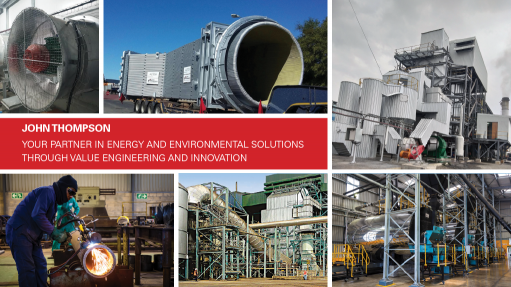Agriculture, fossil fuel burning the main reasons why Africa is emitting more carbon
Research by University of the Witwatersrand (Wits) academics finds that Africa has moved from being a net carbon sink to a net carbon source in nine years, meaning the rate at which carbon is being released from the continent has increased.
Wits explains that Africa went from absorbing more carbon from the atmosphere than it releases to releasing more carbon into the atmosphere than it absorbs, over the period from 2010 to 2019.
Africa is therefore no longer the carbon sink of the world.
A team of researchers from the Futures Ecosystem for Africa programme, based at Wits, estimates that Africa is a source of 4.5 petagrams, or 4.5-billion tons, of carbon dioxide equivalent every year.
While the continent has been producing about 4% of the anthropogenic greenhouse gases (GHGs) that lead to climate change, Africa has also been offering climate services to the world, largely through its intact ecosystems in the tropics that have been sequestering more GHGs than were released through anthropogenic activities.
These areas still serve this purpose; however, the rate at which carbon is being released from the continent has nonetheless increased.
Africa now actually emits nearly 40% of the global emissions from land use and is now, for the first time, contributing between 3% and 5% of the growing amount of GHGs in the atmosphere, says Future Ecosystems principal investigator Professor Sally Archibald.
She says this trend is likely to continue, given Africa’s growing population that will exceed two-billion people by 2040.
The key sources of GHG emissions on the continent include fossil fuel burning, methane emissions from livestock, soil carbon losses and nitrous oxide emissions as land is converted for agricultural use.
“While natural ecosystems continue to act as carbon sinks across the region and are taking up about 30% of what is being emitted to the atmosphere through human activities, greater swaths of land than ever before are being used for agriculture, and livestock numbers are increasing, with the net result being that these changes in land use have affected Africa’s role in the global carbon cycle,” explains Wits Global Change Institute researcher and lead author of the study Dr Yolandi Ernst.
To make their conclusions, the research team followed the budget assessment protocol laid out by the Regional Carbon Cycle Assessment and Processes. The team looked comprehensively at all potential carbon sources, including agriculture and fossil fuel use, as well as natural sources of carbon such as termites and wildfires.
The team also considered natural carbon sinks such as grasslands, savannas and forests that still cover much of the continent.
The information from this research on Africa’s carbon budget is key to identifying which aspects of the GHG cycle are most important to be managed in the quest to achieve net zero, and possibly restore the continent’s role as a carbon sink.
“Investing in carbon-neutral energy sources could reduce about 30% of Africa’s anthropogenic emissions, but novel ways to manage landscapes for livelihoods and carbon storage would be needed to slow the emissions from agriculture and land use,” says Ernst.
“As demand for food production increases, we need a focus on climate-smart agricultural practices on the continent, as well as a focus on investments that address socioeconomic challenges in nature-preserving ways across Africa,” she adds.
Protecting, managing and restoring the landscapes that are helping to take up the excess carbon dioxide is an important part of the solution – but there are challenges with making carbon storage the main goal of conservation and it can conflict with biodiversity and water provision.
The Future Ecosystems for Africa Programme is working with scientists, policy makers, and carbon projects across the continent to try to navigate this and identify opportunities to store carbon in natural ecosystems that do not damage the ecology.
Article Enquiry
Email Article
Save Article
Feedback
To advertise email advertising@creamermedia.co.za or click here
Comments
Press Office
Announcements
What's On
Subscribe to improve your user experience...
Option 1 (equivalent of R125 a month):
Receive a weekly copy of Creamer Media's Engineering News & Mining Weekly magazine
(print copy for those in South Africa and e-magazine for those outside of South Africa)
Receive daily email newsletters
Access to full search results
Access archive of magazine back copies
Access to Projects in Progress
Access to ONE Research Report of your choice in PDF format
Option 2 (equivalent of R375 a month):
All benefits from Option 1
PLUS
Access to Creamer Media's Research Channel Africa for ALL Research Reports, in PDF format, on various industrial and mining sectors
including Electricity; Water; Energy Transition; Hydrogen; Roads, Rail and Ports; Coal; Gold; Platinum; Battery Metals; etc.
Already a subscriber?
Forgotten your password?
Receive weekly copy of Creamer Media's Engineering News & Mining Weekly magazine (print copy for those in South Africa and e-magazine for those outside of South Africa)
➕
Recieve daily email newsletters
➕
Access to full search results
➕
Access archive of magazine back copies
➕
Access to Projects in Progress
➕
Access to ONE Research Report of your choice in PDF format
RESEARCH CHANNEL AFRICA
R4500 (equivalent of R375 a month)
SUBSCRIBEAll benefits from Option 1
➕
Access to Creamer Media's Research Channel Africa for ALL Research Reports on various industrial and mining sectors, in PDF format, including on:
Electricity
➕
Water
➕
Energy Transition
➕
Hydrogen
➕
Roads, Rail and Ports
➕
Coal
➕
Gold
➕
Platinum
➕
Battery Metals
➕
etc.
Receive all benefits from Option 1 or Option 2 delivered to numerous people at your company
➕
Multiple User names and Passwords for simultaneous log-ins
➕
Intranet integration access to all in your organisation

















